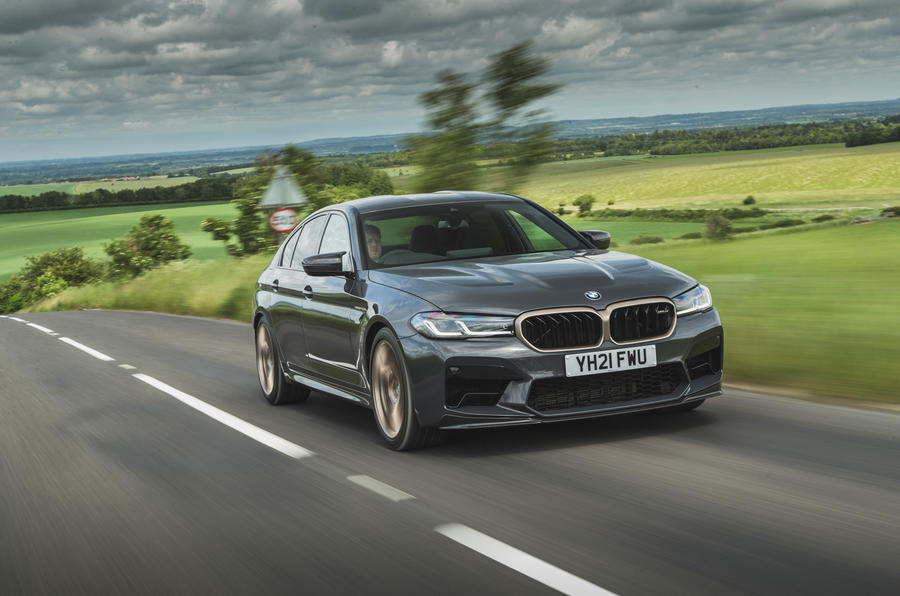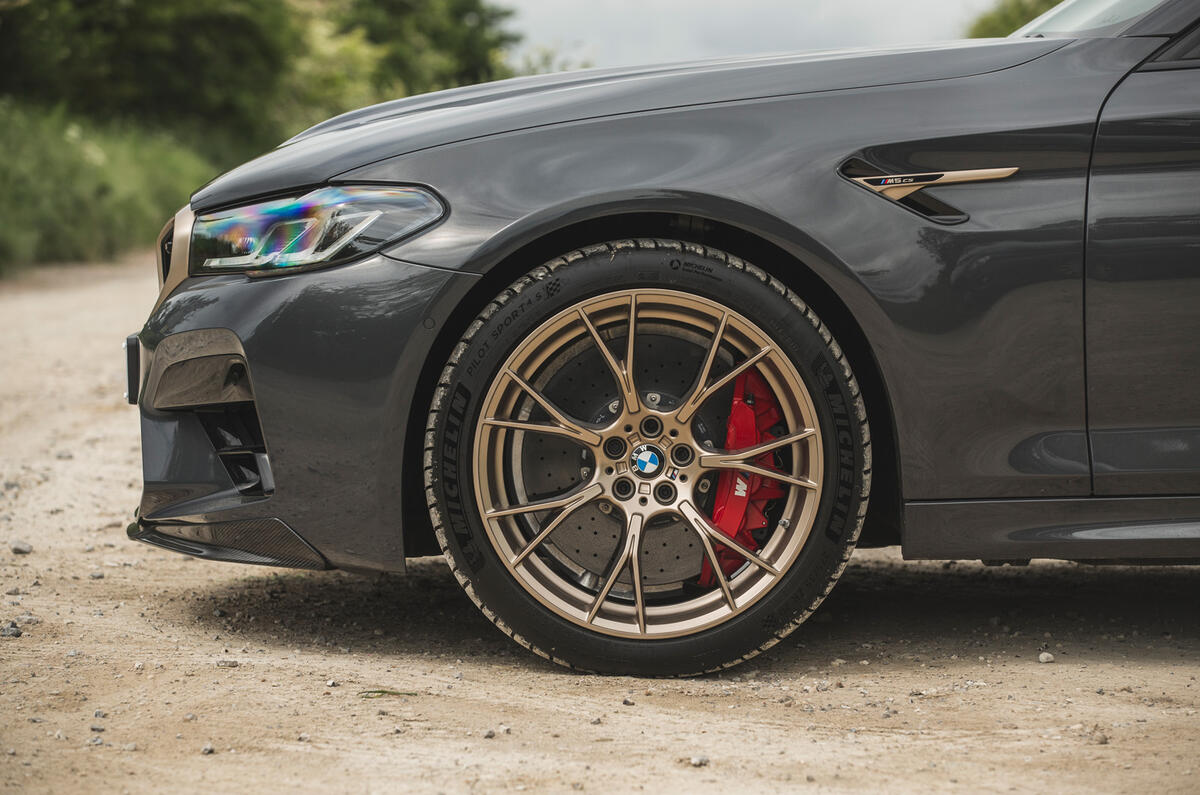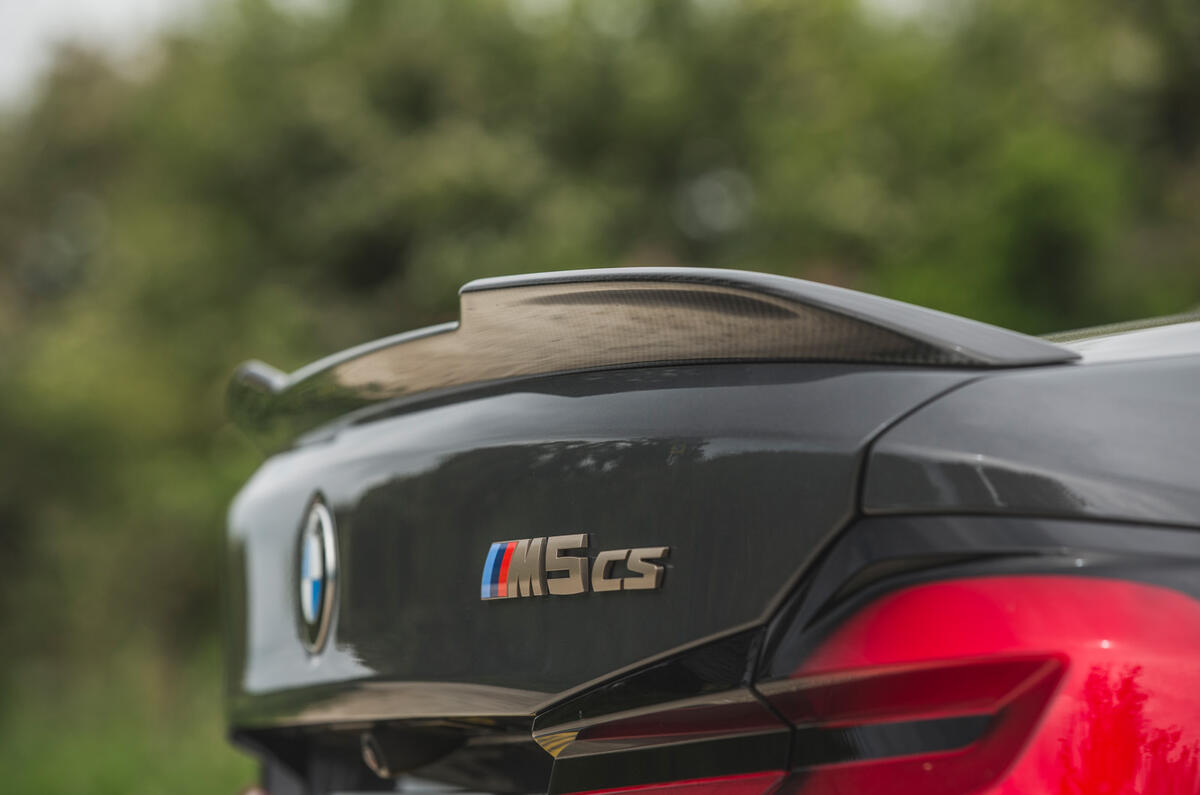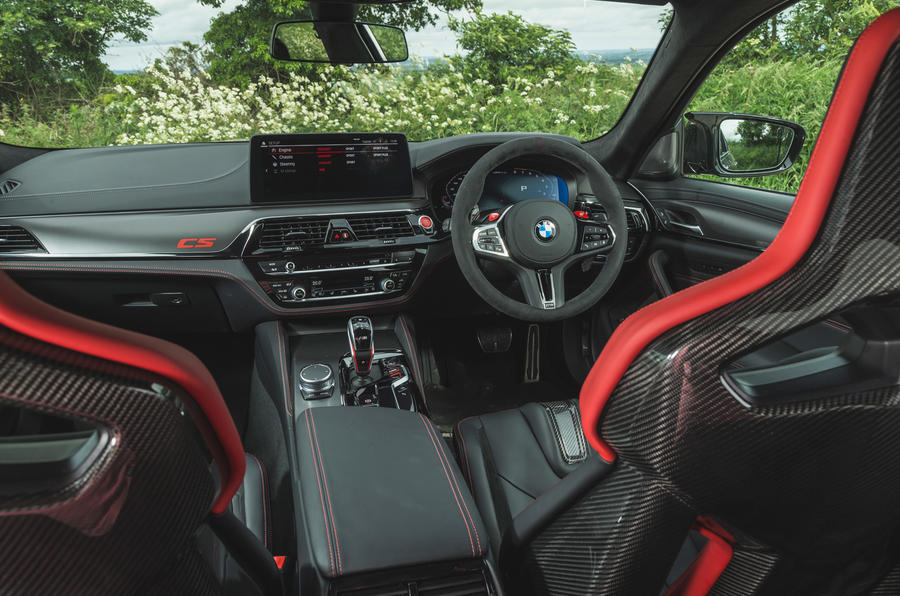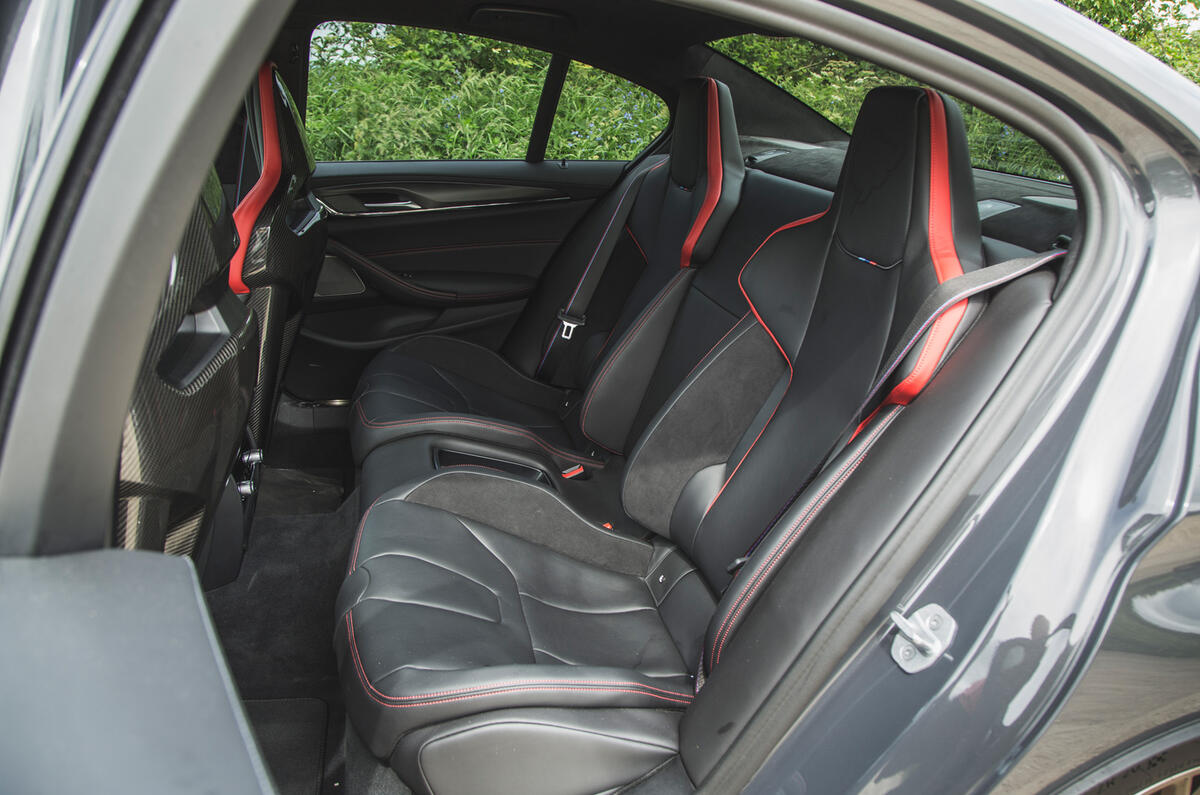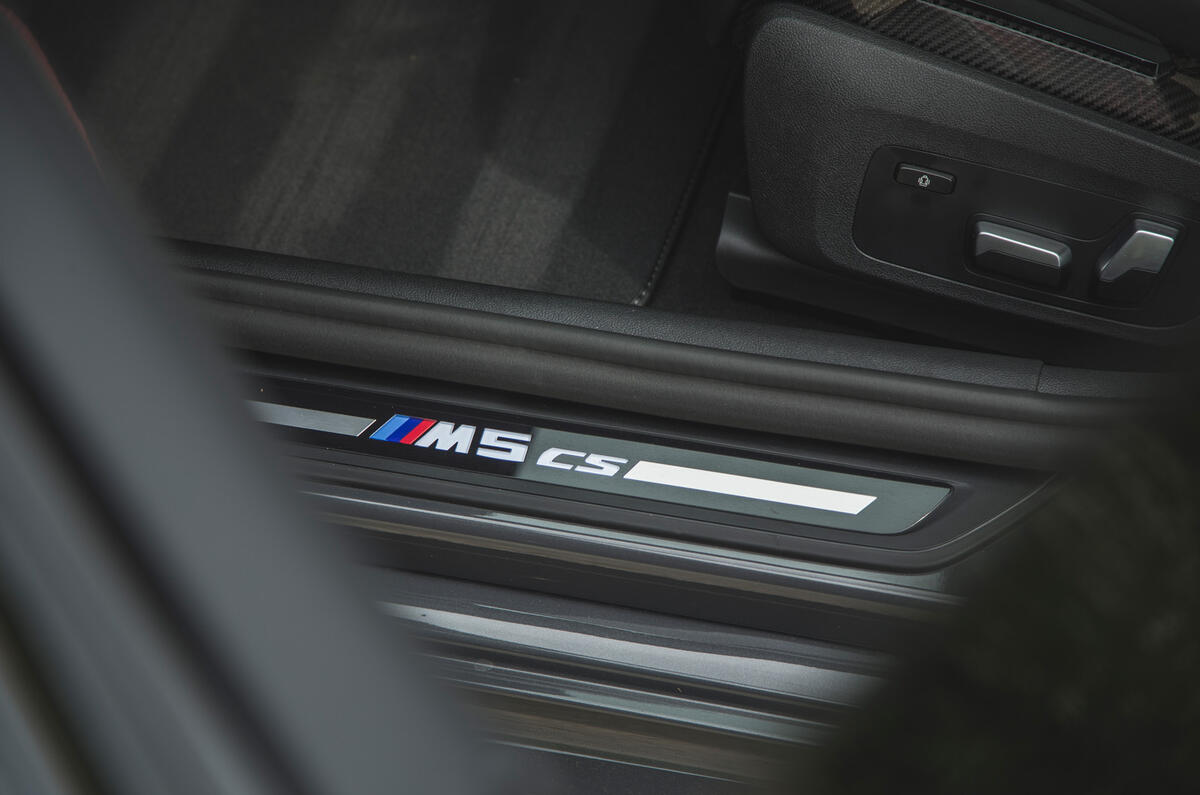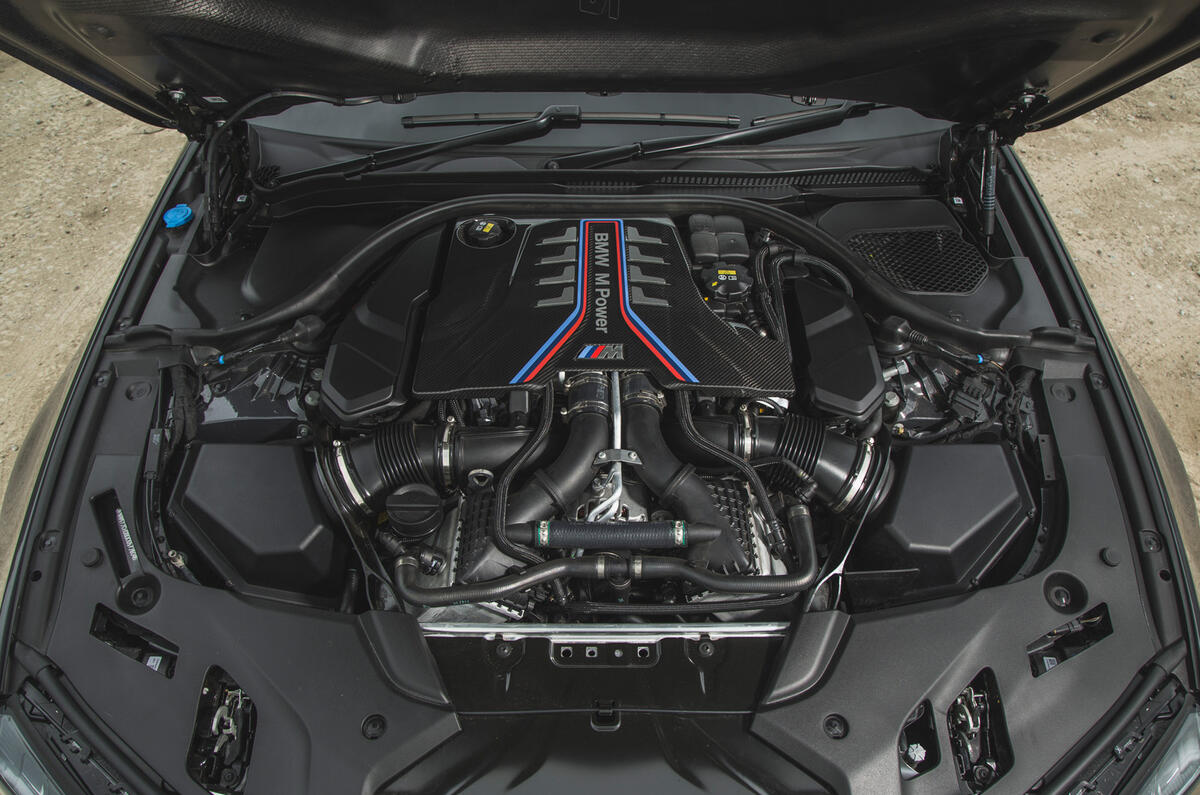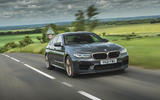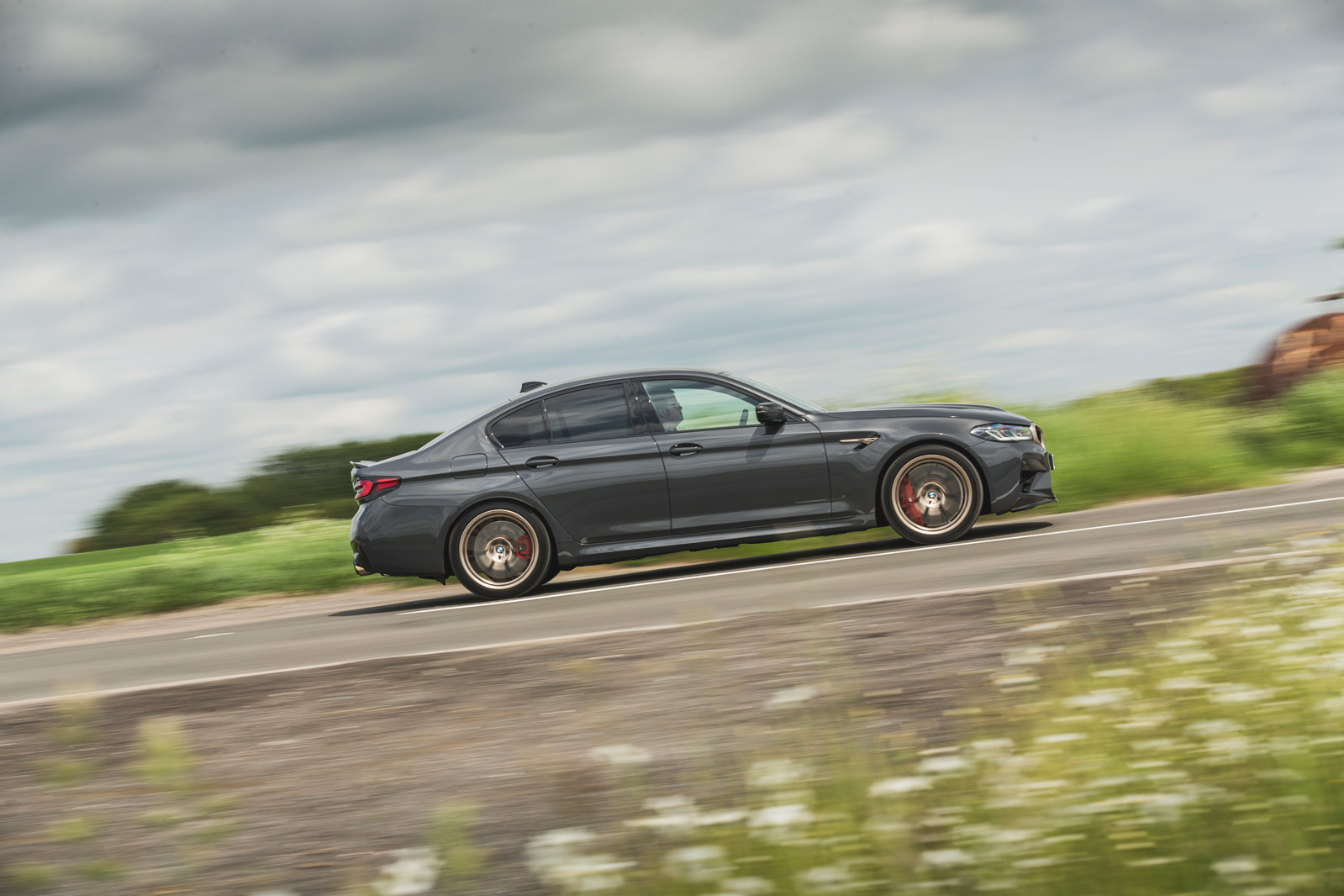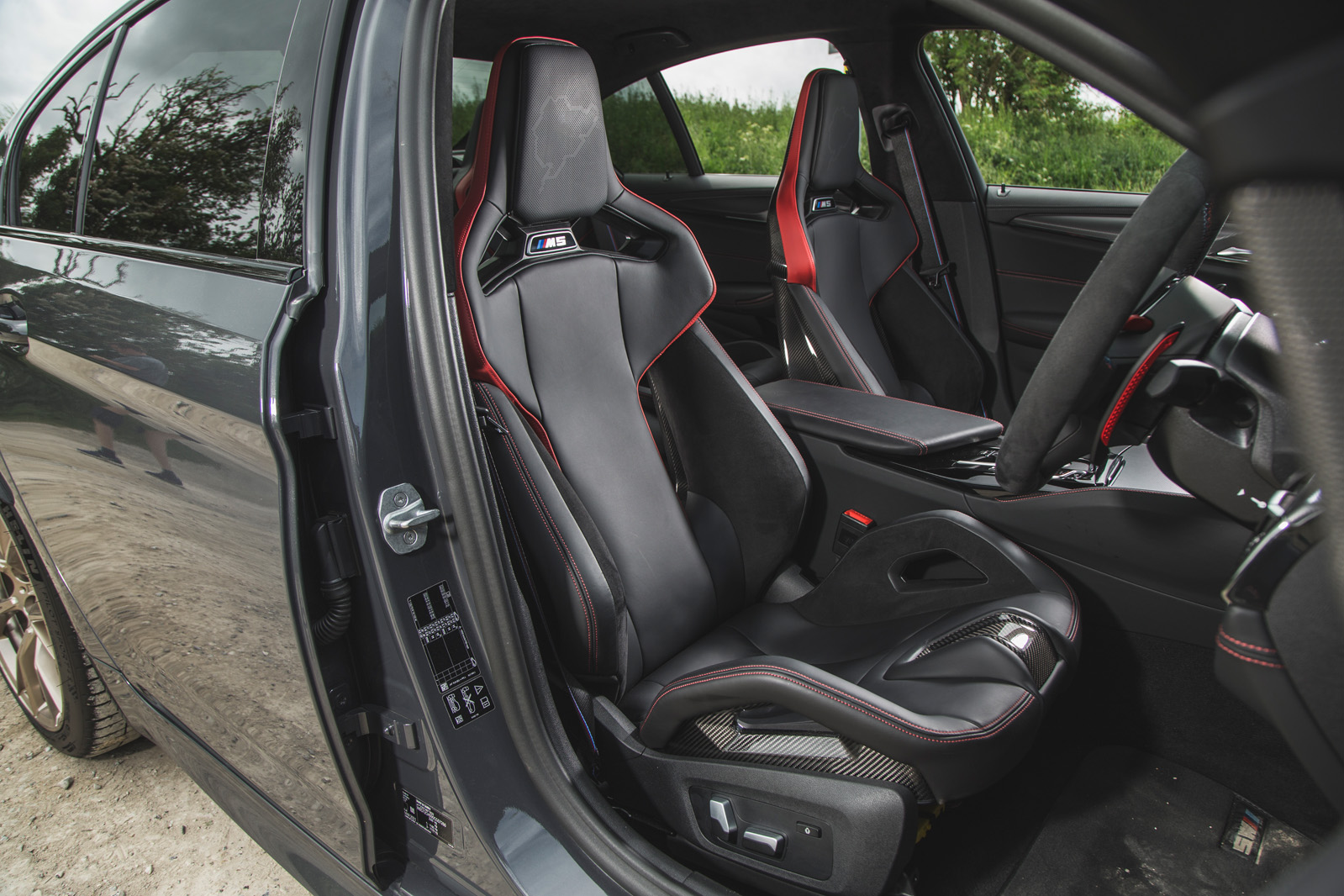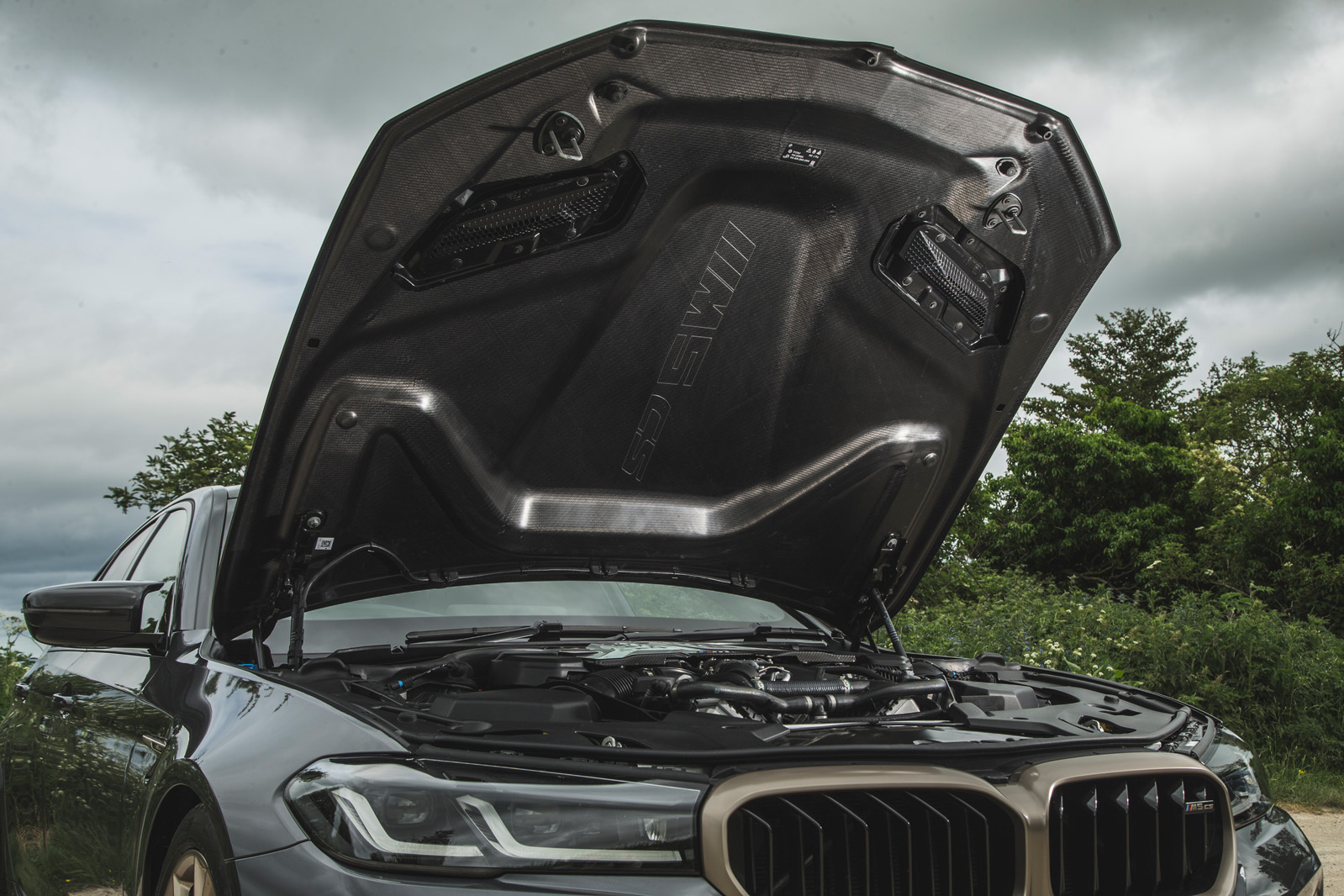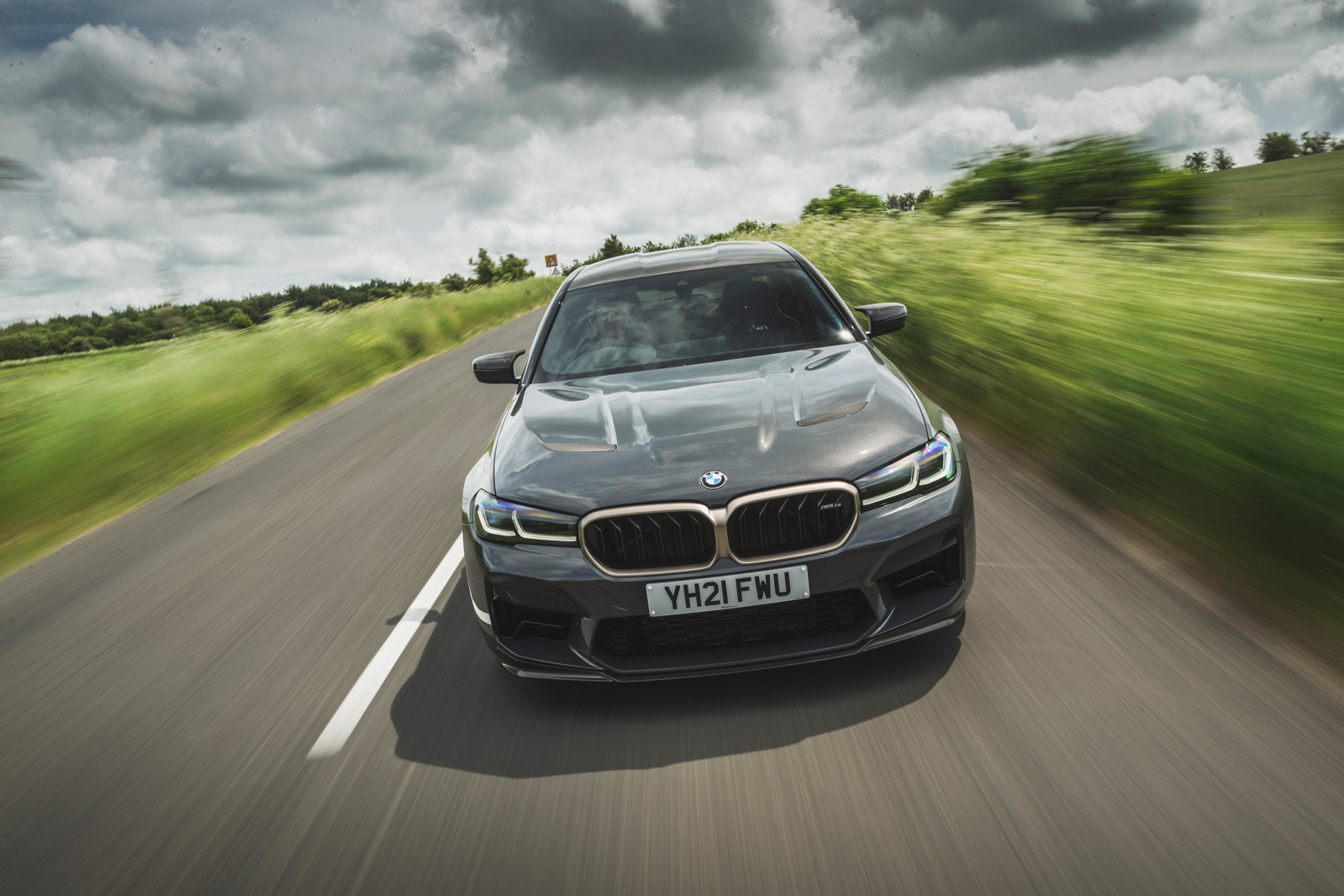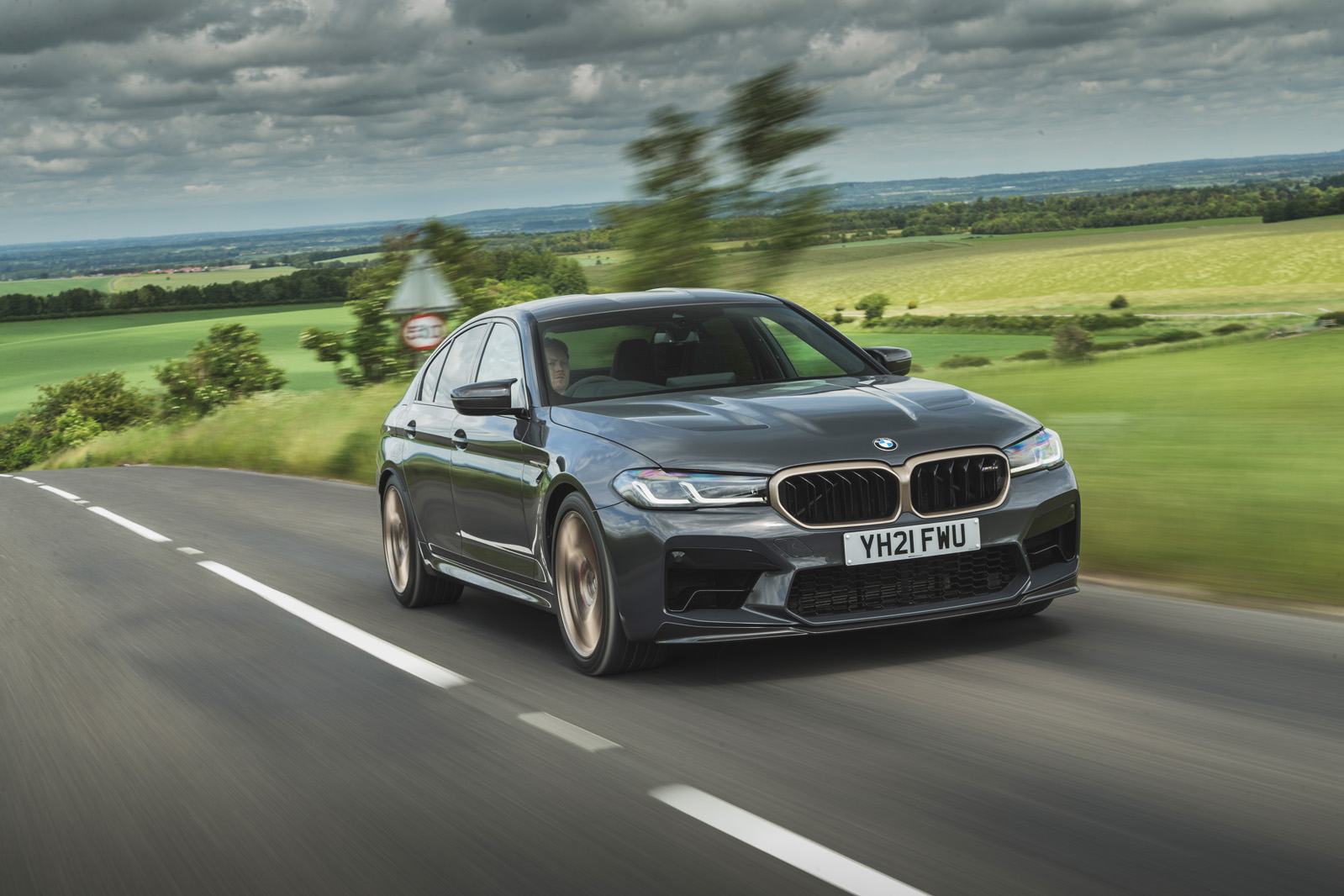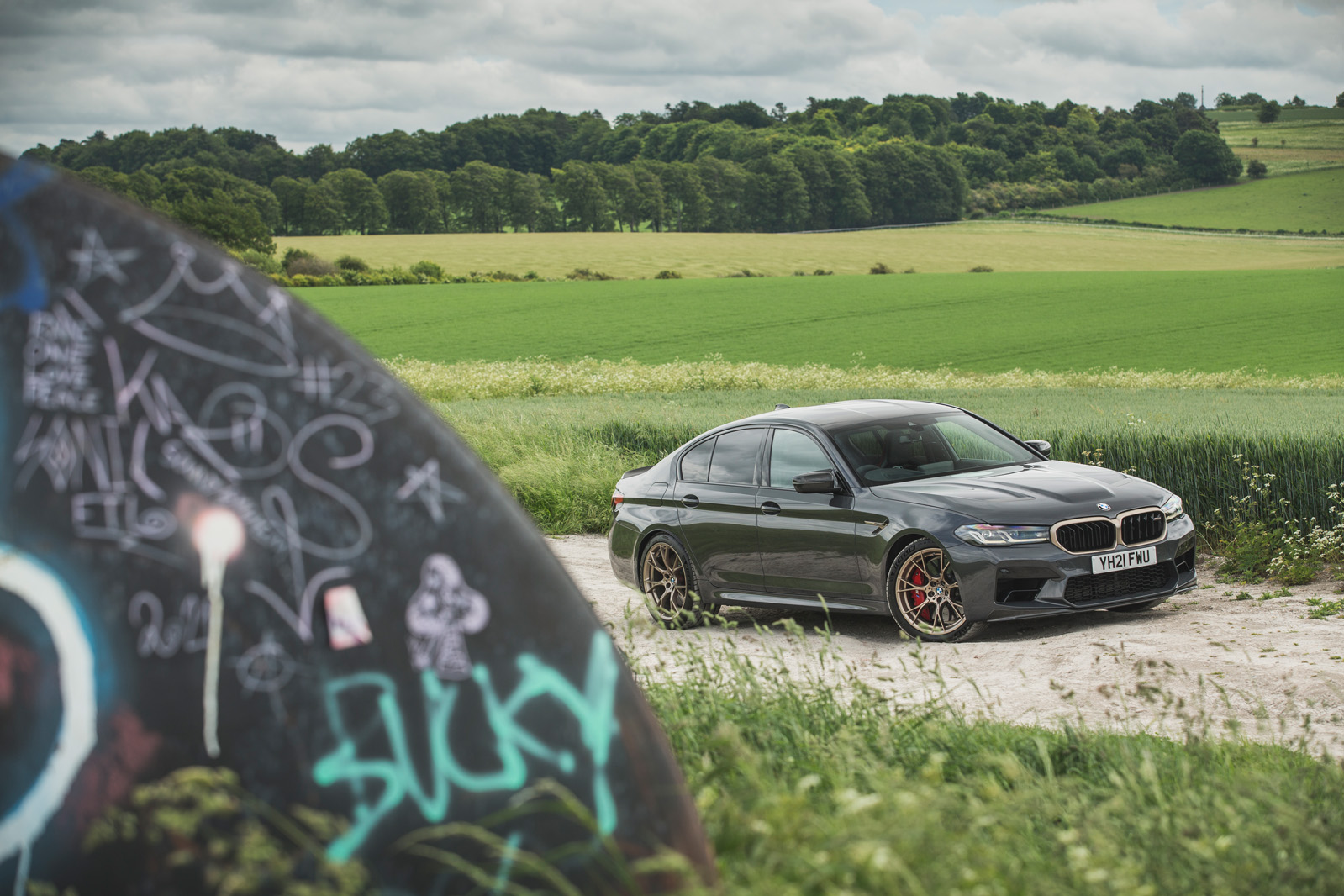When appearing on the bootlid of a fast BMW, ‘CS’ originally stood for either Competition Sport or Club Sport – depending on exactly when it was applied, and to what. That might lead you to expect this week’s road test subject to be some stripped-out racing machine, but it isn’t.
The CS model suffix has, in fact, been used of late by BMW’s Motorsport in-house tuning division to identify all kinds of extra-special M cars, and now it’s being used on a ‘Club Sport’ model of a bigger and more powerful size altogether: the £140,780 BMW M5 CS super-saloon.
This car refines and enhances the mechanical recipe of the M5 Competition in a number of ways that may seem quite subtle on the face of it. Their aim, however, is to produce a performance car of very special status: the most powerful road-going BMW M car there has ever been, for one – but also the ultimate M5.
In that lofty pursuit, M division has resisted the lure of turning this car into some four-door track-day monolith and instead cherished and honoured the BMW M5’s enduring usability as a road car.
It has become such a habit of BMW to use later-model-life special editions to fully uncork the dynamic potential of its M cars that we predicted the appearance of this car in our 2018 road test of the current, F90-generation BMW M5. We wrote: “If BMW M history is any guide (think F10 M5 ‘30 Jahre’, F82 M4 CS and others), the very best version of this M5 may be yet to come. And when it does come, it ought to be something very special indeed.”


